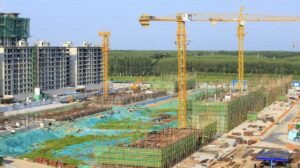Philippines Q1 GDP Growth Hits 5.9%: Poll

The Philippine economy likely accelerated in Q1 2024, overcoming tariff-related external challenges through robust domestic drivers. Notably, stable inflation and surging consumer spending appear to have offset international trade pressures, according to analysts.
While export tariffs created headwinds, the economy's domestic fundamentals — particularly consumer spending and stable prices — provided critical ballast," noted one senior economist in the poll. This aligns with the Bangko Sentral ng Pilipinas' (BSP) assessment of "non-inflationary growth" in recent quarters.
The Philippine economy demonstrated remarkable resilience in the first quarter of 2024 as robust consumer spending offset external headwinds, according to leading financial analysts. The combination of easing inflation, employment gains, and steady remittance flows created a perfect storm of domestic demand that compensated for looming global trade risks.
"Faster disinflation, particularly through the rice price collapse, created unprecedented breathing room for discretionary spending," explained Ruben Carlo Asuncion, Chief Economist at Union Bank Philippines. "When you combine this with rising employment and stable remittances, you get the 5.7% GDP growth we're projecting for Q1 – potentially the strongest in ASEAN."
The analyst noted this consumer resilience emerged despite:
✔ 25% tariffs on key PH exports to the US taking effect
✔ 12% contraction in electronics shipments
✔ Global recession fears depressing regional markets
Analysts confirm the country was not immune to the ripple effects of former U.S. President Donald Trump's threats of higher tariffs on major trading partners. The impact manifested through complex trade dynamics - exports saw only modest 1.2% annual growth as key sectors like electronics (comprising 54% of shipments) contracted by 3.4%, while imports surged 8.7% as manufacturers engaged in precautionary stockpiling of capital goods and industrial materials.
"This paradoxical dynamic of rising imports alongside struggling exports significantly widened the net export drag," noted Sanjay Mathur, ANZ Research's Chief Economist for Southeast Asia, who estimates this subtracted 1.2 percentage points from GDP growth, pulling first-quarter expansion down to 5.1%. The concerning trade picture has prompted calls for proactive policy responses, with Union Bank economist Ruben Carlo Asuncion advocating for additional BSP rate cuts, suggesting a 50 basis point reduction could offset an estimated 0.3% GDP erosion from tariff impacts.
Looking ahead, economists are questioning whether 5% growth may represent the new ceiling for 2024 given persistent global trade uncertainties. "The critical question is whether domestic demand alone can compensate for these external trade losses moving forward," Asuncion cautioned, emphasizing the need for structural adjustments like accelerating free trade agreements with the EU and UK while diversifying export markets beyond the traditional electronics sector. The coming quarters will test the economy's ability to balance these international headwinds against its domestic growth drivers.

 English
English
